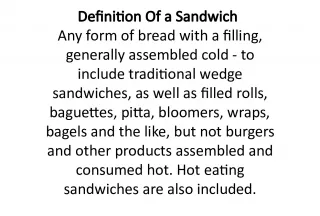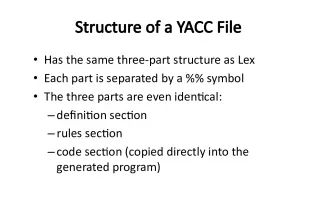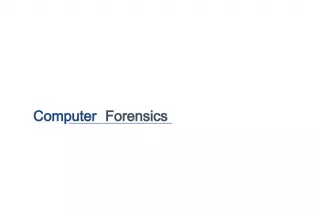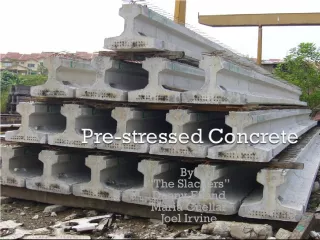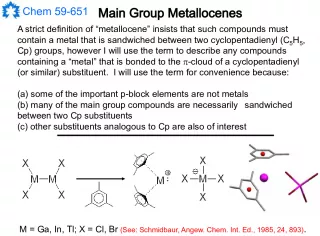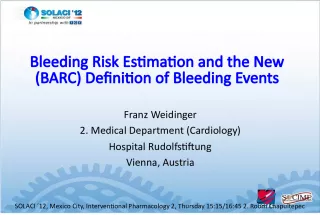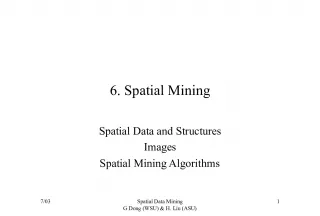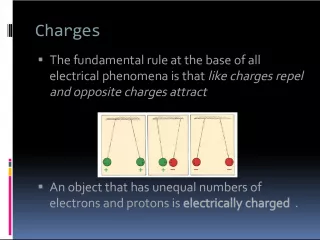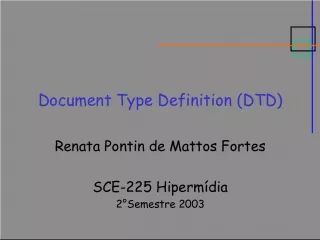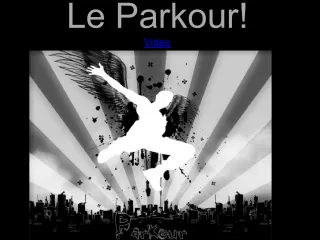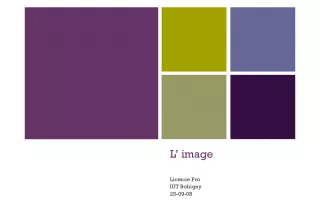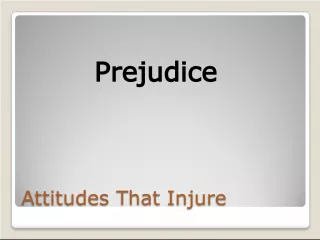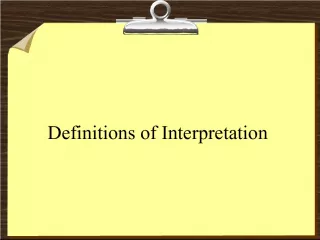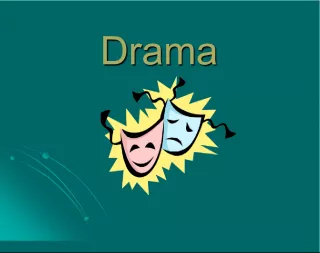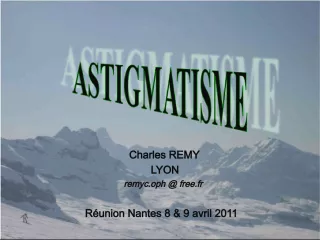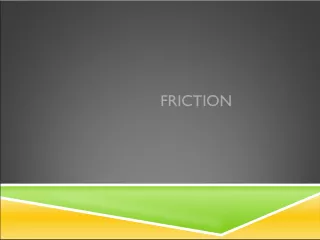Definition of Fractals
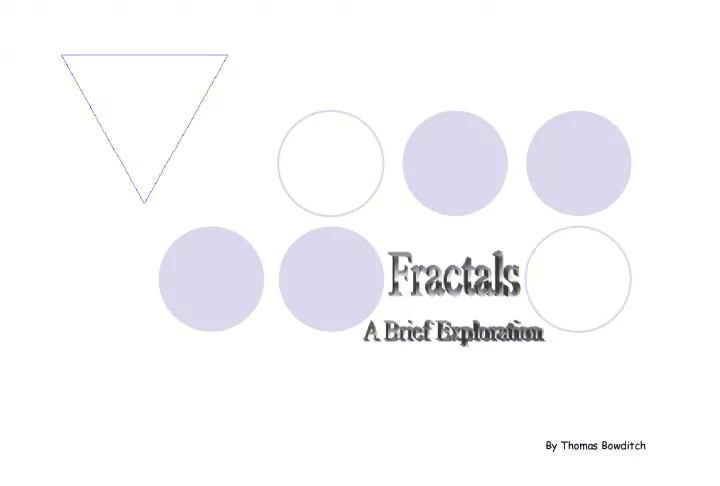

A fractal is a rough or fragmented geometric shape that can be subdivided into parts, each of which is a smaller copy of the whole.
- Uploaded on | 2 Views
-
 fredo
fredo
About Definition of Fractals
PowerPoint presentation about 'Definition of Fractals'. This presentation describes the topic on A fractal is a rough or fragmented geometric shape that can be subdivided into parts, each of which is a smaller copy of the whole.. The key topics included in this slideshow are . Download this presentation absolutely free.
Presentation Transcript
Slide1By Thomas Bowditch
Slide2A fractal is generally,"a rough or fragmented geometric shape that can be subdivided in parts, each of which is (at least approximately) a reduced-size copy of the whole,“ This is a property called self-similarity. The term was coined by Benoît Mandlebrot in 1975 and was derived from the Latin fractus meaning "broken" or "fractured".
Slide3A fractal often has the following features:• It has a fine structure at arbitrarily small scales. • It is too irregular to be easily described in traditional Euclidean geometric language. • It is self-similar (at least approximately). • It has a Hausdorff dimension which is greater than its topological dimension (although this requirement is not met by space-filling curves such as the Hilbert curve). • It has a simple and recursive definition. Because they appear similar at all levels of magnification, fractals are often considered to be infinitely complex (in informal terms). Natural objects that approximate fractals to a degree include clouds, mountain ranges, lightning bolts, coastlines, and snow flakes. However, not all self-similar objects are fractals. For example, a straight Euclidean line is formally self-similar but fails to have other fractal characteristics.
Slide4the koch snowflake is a mathematical curve and one of the earliest fractal curves to have beendescribed. It appeared in a 1904 paper entitled "On a continuous curve without tangents, constructible from elementary geometry by the Swedish mathematician Helge von Koch. The lesser known Koch curve is the same as the snowflake, except it starts with a line segment instead of an equilateral triangle. One can imagine that it was created by starting with a line segment, then recursively altering each line segment as follows: Divide the line segment into three segments of equal length. Draw an equilateral triangle that has the middle segment from step 1 as its base and points outward. Remove the line segment that is the base of the triangle from step 2. The area of the Koch snowflake is , where s is the measure of one side of the original triangle, and so an infinite perimeter encloses a finite area.
Slide5Let be the number of sides, be the length of a single side, be the length of the perimeter , and the snowflake's area after the th iteration. Further, denote the area of the initial triangle , and the length of an initial side 1. Then The capacity dimension is then
Slide6the koch curve has an infinite length because each timethe steps above are performed on each line segment of the figure there are four times as many line segments, the length of each being one-third the length of the segments in the previous stage. Hence the total length increases by one third and thus the length at step n will be (4/3)n: the fractal dimension is log 4/log 3 ≈ 1.26, greater than the dimension of a normal line Here is how the curve is recursively constructed: We start with a line segment (step 0, top segment.) Then on each step we do the following: 1. Divide the line segment in three parts. 2. Draw an equilateral triangle with the middle segment as base. 3. Remove the middle segment .
Slide7three common techniques for generating fractals are:Escape-time fractals — These are defined by a recurrence relation at each point in a space (such as the complex plane). Examples of this type are the Mandelbrot set, Julia set, the Burning Ship fractal and the Lyapunov fractal. Iterated function systems — These have a fixed geometric replacement rule. Cantor set, Sierpinski carpet, Sierpinski gasket, Peano curve, Koch snowflake, Harter-Heighway dragon curve, T- Square, Menger sponge, are some examples of such fractals. Random fractals — Generated by stochastic rather than deterministic processes, for example, trajectories of the Brownian motion, Lévy flight, fractal landscapes and the Brownian tree. The latter yields so-called mass- or dendritic fractals, for example, diffusion-limited aggregation or clusters. Mandelbrot set
Slide8fractals can also be classified according to their self-similarity. There are three types ofself-similarity found in fractals: Exact self-similarity — This is the strongest type of self-similarity; the fractal appears identical at different scales. Fractals defined by iterated function systems often display exact self-similarity. Quasi-self-similarity — This is a loose form of self-similarity; the fractal appears approximately (but not exactly) identical at different scales. Quasi-self-similar fractals contain small copies of the entire fractal in distorted and degenerate forms. Fractals defined by recurrence relations are usually quasi-self-similar but not exactly self- similar. Statistical self-similarity — This is the weakest type of self-similarity; the fractal has numerical or statistical measures which are preserved across scales. Most reasonable definitions of "fractal" trivially imply some form of statistical self-similarity. (Fractal dimension itself is a numerical measure which is preserved across scales.) Random fractals are examples of fractals which are statistically self-similar, but neither exactly nor quasi-self-similar.
Slide9Approximate fractals are easily found in nature.These objects display self-similar structure over an extended, but finite, scale range. Examples include clouds, snow flakes, crystals, mountain ranges, lightning, river networks, cauliflower or broccoli, and systems of blood vessels and pulmonary vessels. Coastlines may be loosely considered fractal in nature. Trees and ferns are fractal in nature and can be modelled on a computer by using a recursive algorithm. This recursive nature is obvious in these examples — a branch from a tree or a frond from a fern is a miniature replica of the whole: not identical, but similar in nature. In 1999, certain self similar fractal shapes were shown to have a property of "frequency invariance" — the same electromagnetic properties no matter what the frequency Fractal that models the surface of a mountain
Slide10Mandelbrot, B.B. (1982). The Fractal Geometry of Nature . W.H. Freeman and Company. ISBN 0-7167-1186-9. Falconer, Kenneth (2003). Fractal Geometry: Mathematical Foundations and Applications . John Wiley & Sons, Ltd., xxv. ISBN 0-470-84862-6. Hohlfeld,R., and Cohen, N.,"SELF-SIMILARITY AND THE GEOMETRIC REQUIREMENTS FOR FREQUENCY INDEPENDENCE IN ANTENNAE ", Fractals, Vol. 7, No. 1 (1999) 79- 84 Richard Taylor, Adam P. Micolich and David Jonas. Fractal Expressionism : Can Science Be Used To Further Our Understanding Of Art? A Panorama of Fractals and Their Uses by Michael Frame and Benoit B. Mandelbrot Ron Eglash. African Fractals: Modern Computing and Indigenous Design. New Brunswick: Rutgers University Press 1999. Peng, Gongwen; Decheng Tian (21 July 1990). "The fractal nature of a fracture surface". Journal of Physics A (14): 3257-3261. doi:10.1088/0305-4470/23/14/022.


